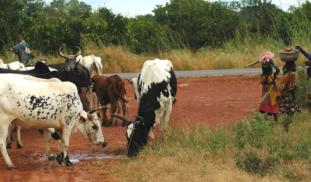Please wait...
About This Project
Anopheles arabiensis is a major malaria mosquito in Africa. Some feed on humans, others on cows. Cow-feeders do not contribute to malaria transmission. We've found that a mosquito's genes can determine whether it prefers cows or humans - we're hoping to find the specific genes that promote a human appetite. Manipulating these genes could alter the number of mosquitoes biting people, reducing malaria transmission.

Browse Other Projects on Experiment
Related Projects
How do polar bears stay healthy on the world's worst diet?
Polar bears survive almost entirely on seal fat. Yet unlike humans who eat high-fat diets, polar bears never...
Uncovering hidden insect diversity associated with a likely undescribed gall-forming midge
Does a likely undescribed species of gall-forming midge (pers. comm. Ray Gagné) on Eriodictyon plants (Yerba...
Macrofungi of the California archipelago
The eight islands of the California Archipelago are a well-studied biodiversity hotspot — but we know almost...


